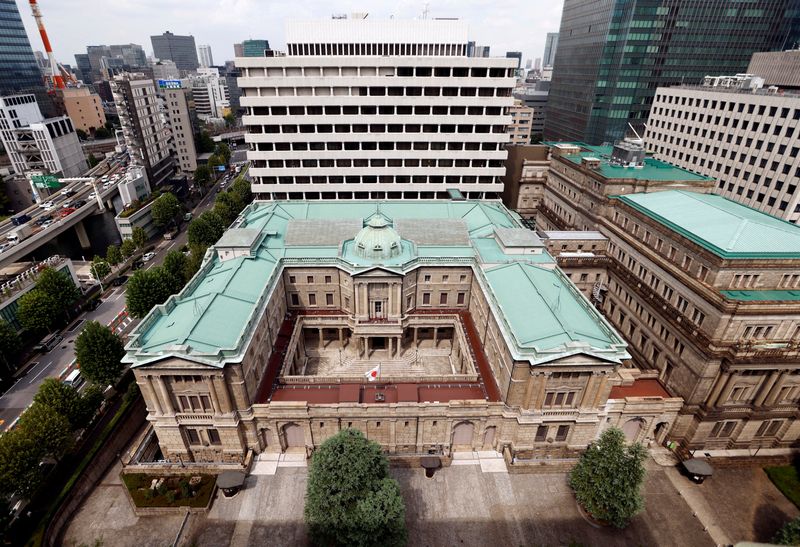
©Reuters. FILE PHOTO: The Japanese national flag is hoisted atop the Bank of Japan headquarters in Tokyo, Japan, September 20, 2023. REUTERS/Issei Kato/File Photo/File Photo
By Leika Kihara
TOKYO (Reuters) – The Bank of Japan is nearing the end of eight years of negative interest rate policy, with expected historic wage rises raising the prospect of a seismic shift away from its massive stimulus program next week.
Internal preparations for an exit have been underway since Kazuo Ueda took office as BOJ governor in April last year, and were mostly completed by the end of the year, sources familiar with the bank’s thinking say .
BOJ officials, including Ueda, have recently stressed that the timing of a move away from negative rates will depend on the outcome of this year’s annual wage negotiations between workers and employers.
The exceptional salary increases offered by large companies such as Toyota Motor (NYSE:) this month, the biggest in 25 years, now appears to be paving the way for the BOJ to phase out its massive stimulus.
If the board believes conditions are right, the BOJ will set the overnight rate as the new target and guide it to a range of 0 to 0.1% while paying 0.1% interest on excess reserves that financial institutions park at the central bank.
The BOJ will likely make a final decision on whether to pull the trigger next week, or wait until April, after reviewing a preliminary survey of the results of wage negotiations among large companies that will be released by labor umbrella Rengo later on Friday.
“If large companies offer large salary increases, it is very likely that smaller companies will follow suit to some extent so they can hire enough staff,” said Yoshiki Shinke, senior executive economist at Dai-ichi Life Research Institute .
“The Rengo survey, due on Friday, will give the BOJ a very good reason to end negative rates in March,” he said.
Analysts expect Friday’s Rengo survey to show a wage increase of around 4.5% or even 5%, well above the 3.8% increase in a survey conducted a year ago, raising the hopes that rising wages could boost stagnant household spending and broader economic growth.
Once it abandons its negative rate policy, the BOJ will also abandon control over bond yields and halt purchases of risky assets such as exchange-traded funds (ETFs), sources told Reuters, formally ending the BOJ’s radical monetary experiment. former governor Haruhiko. Kuroda in force since 2013.
A survey conducted in March showed 35% of economists expect the BOJ to end negative rates at its two-day meeting ending Tuesday, up from 7% a month earlier but still below 62% , anticipating such action at a subsequent meeting on April 25. 26.
With the end of negative rates seen as an almost done thing, market attention is turning to any clues the BOJ might provide about the pace of any interest rate hikes thereafter.
Ueda said the central bank would maintain accommodative monetary conditions even after ending negative rates, and would avoid causing any “discontinuity” from current ultra-loose policy given uncertainty over the economic outlook.
Any indication of the future policy path the BOJ might offer once negative rates end will likely be in line with such comments, sources told Reuters.
Under previous governor Kuroda, the BOJ implemented a huge asset purchase program in 2013 to boost growth and bring inflation to 2% in about two years.
The central bank introduced negative rates and yield curve control (YCC) in 2016, when tepid inflation forced it to tweak its stimulus program to make it more sustainable.
However, last year, when the yen’s sharp decline pushed up the cost of imports and heightened public criticism of the cost of Japan’s ultra-low interest rates, the BOJ adjusted the YCC to loosen its grip on rates long-term.
The end of negative short-term rates would represent Japan’s first interest rate hike since 2007.